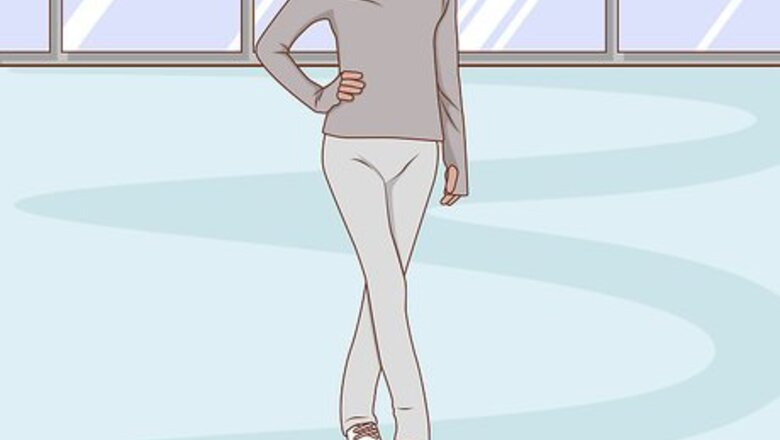
views
Choosing Gear and Warming Up
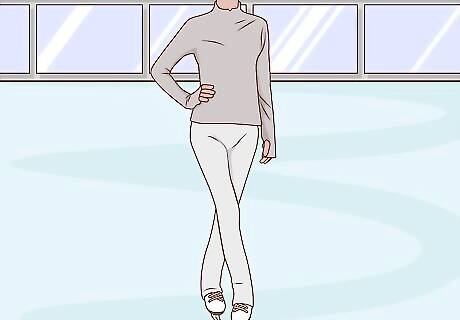
Wear comfortable, lightweight clothes. When you're ice skating, you'll need full mobility of your body to move quickly and safely. Avoid heavy winter coats. Instead, wear a light jacket, fleece sweater, or sweatshirt. Dress in layers so you can take off a sweater if you get too hot while skating. If you wear a scarf, tuck it inside your sweater or jacket to keep it out of your way.
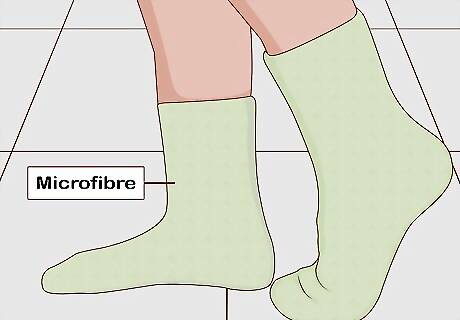
Put on microfiber socks or tights. Buy specialized skating tights or a pair of microfiber socks. Without socks, your feet are at-risk for blistering or (if you borrow skates from the rink) developing an infection. Avoid bulky socks, which can make your skates less secure. Microfiber socks are preferred because they absorb moisture and keep feet warm, as opposed to cotton or wool socks.
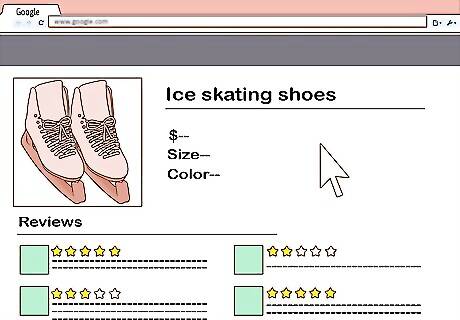
Purchase a high quality pair in good condition to avoid injury. Cheap pairs may brake easily and leave you vulnerable to ankle sprains. Research ice skate brands online, and choose one with positive reviews. If you buy a used pair, ask the original owner why they're selling them. Try on the shoes before you buy them. Buy your shoes at an athletic specialty store so employees can help you find the right fit.

Warm up before you hit the ice. Doing a few warm-ups beforehand will help prevent soreness or cramping after you're done, as ice skating can be a workout. First, stretch your legs over the rink barriers. Then, stretch your upper body with by raising your arms out to your sides and rotating them in small circles. After five to ten minutes of warming up, you're ready to skate. Complete your warm ups before you put on your skates.
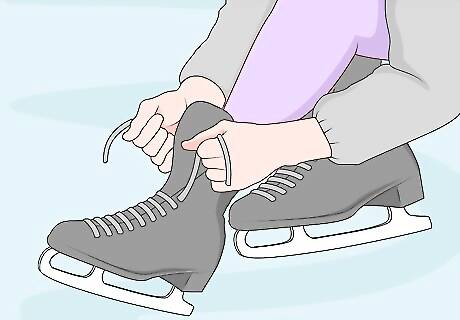
Tighten your skates securely. Ice skates that are too loose put you at-risk for falling or rolling an ankle. Whether your skates have straps or laces (or both), make sure they're tight. It's most important to keep your skates tight around the area where your foot and ankle bends, so pay special attention to that area. Ask a skating rink employee for help tightening your skates if you're unsure how.
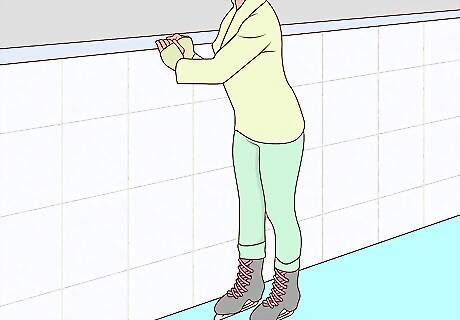
Stay near the rail at first. Don't feel bad if, at first, you hold tightly to the rail as you skate. Rails are built into skating rinks to keep new and seasoned skaters upright. The rail can help you get used to the slippery surface until you feel more comfortable.
Practicing Basic Techniques
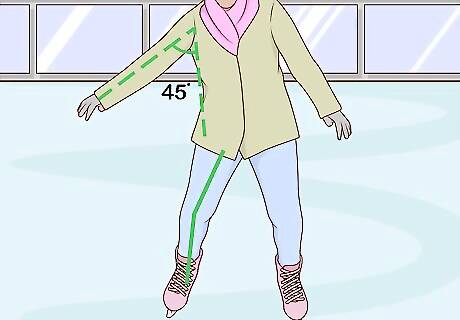
Bend your knees to stay balanced as you skate. This will help you maintain your center of gravity. Pretend like you are hovering over a chair and lower your bottom into a semi-sitting position. Lean forward to keep your center of gravity even, and hold your arms out at a 45 degree angle if you feel wobbly.
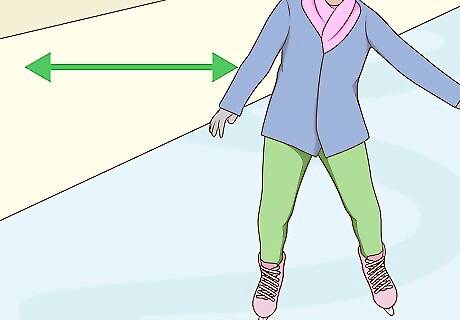
Step away from the rail gradually. When you're ready, try lifting your hand away from the rail. Bend your knees and lean forward as you do so to minimize the chance of falling. Stay within an arm's length of the rail at first so, if necessary, you can return your grip on the rail.
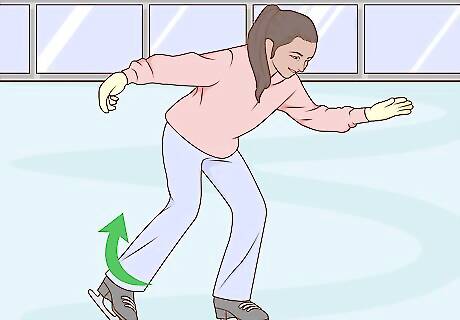
Start skating forward by gliding. Gliding is a simple method of moving forward, and it can be done slowly or quickly. Keeping your arms out, take small steps with your skates. Take slow steps at first, but step more quickly as you gain momentum. Pick up one foot and then the other while skating until your feet move forward with little effort. Grab the rail if you begin to lose your balance.
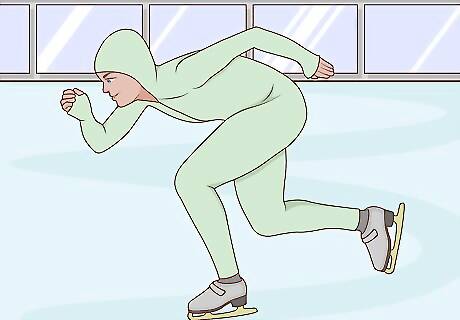
Skate faster by bending your knees further. Add some speed by bending your knees deeply until in a full sitting position. Increase the power you put into your glide with more forceful steps. Lean forward as you skate faster so that if you fall, you're less likely to hit your head. Take your time. You don't have to skate as fast as a figure skater during your first day on the ice.
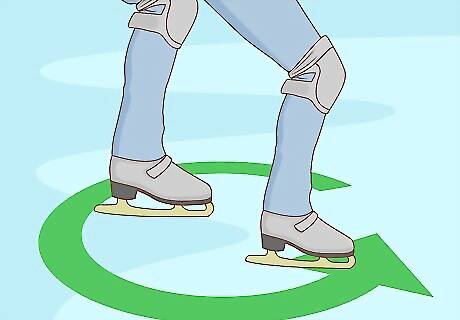
Turn using your dominant foot. Put your dominant foot forward and lean your body towards the center of the ice rink. Bend your knees to retain momentum as you turn. Hold this position until you have completed the turn, then switch back to gliding once you're skating in a straight line again.
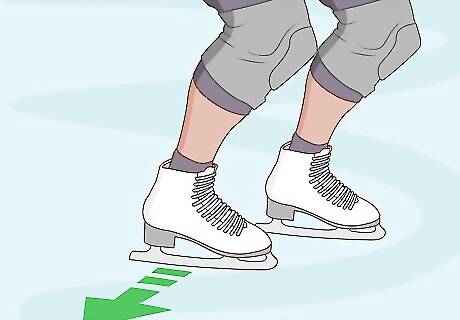
Stop using the flat part of your blades. Push the flat part of your blades against the ice until you can feel it scraping. Put one foot out and, bending your knees, add pressure to the flat part again. This will bring you to a gradual stop. This is a basic stopping technique called the "snowplow stop," and it is ideal for beginning skaters. As you continue skating, you can try more complex techniques. Practice stopping safely so you know what to do in an emergency.
Learning Safety Precautions

Wear a helmet and wristguards. Ice skating presents a serious risk for head injuries, which bringing a helmet prevents. Although wearing a helmet can seem uncomfortable or even "dorky," they greatly reduce the risk of concussions. Wristguards are also important to prevent spraining your hands if you fall abruptly. Young children or inexperienced skaters can also wear knee and elbow pads for added precaution.
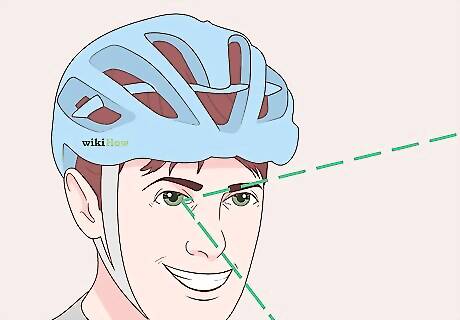
Stay focused on your surroundings. Watch out for other skaters and give yourself plenty of room to practice. Keep your eyes focused ahead and use your peripheral vision to stay aware of what’s going around you. Avoid closing your eyes, especially if skating in a crowded ice rink. Don't wear headphones while skating, especially during your first time. Hearing is just as important as sight when skating.
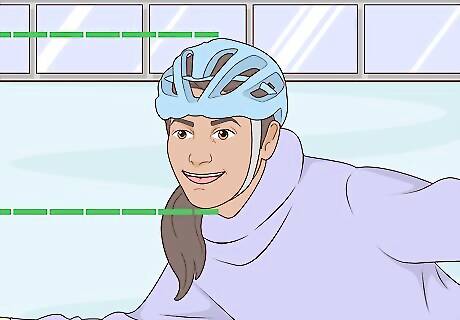
Keep your head up while you skate. New skaters often make the mistake of looking at their feet. This not only removes your focus from your surroundings but also ruins your center of gravity. If you find yourself looking down, keep your head up and your eyes level with the horizon.
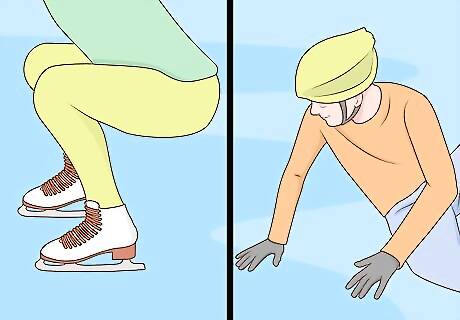
Train yourself to fall on the ice safely. You never know when you'll fall on the ice, so practice what to do before it becomes vital. Bend your knees and squat forward, and try falling sideways to avoid injuring your wrists. When you're on the ground and feel safe enough to get up, place your feet between your hands and lift to push yourself on your feet. Practice falling while off the ice (both with and without skates) to try it in a controlled environment.




















Comments
0 comment